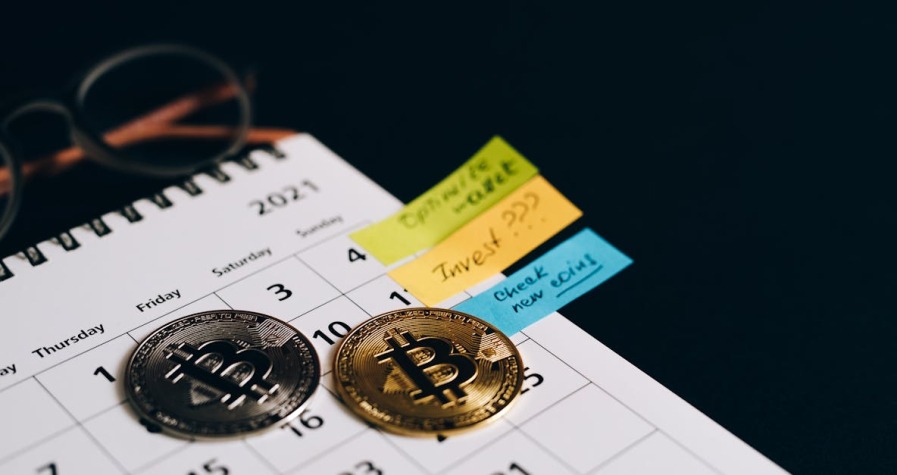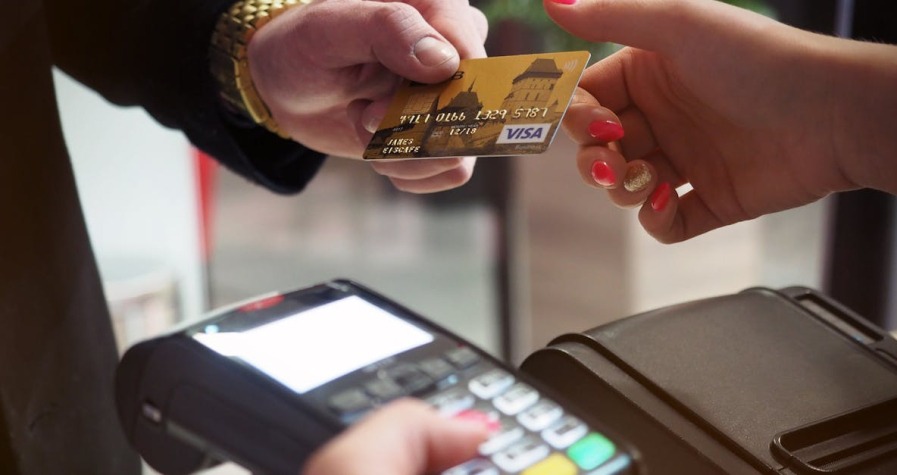You’ve probably heard the buzz around Ethereum and wondered how to get your hands on this popular cryptocurrency. As the second-largest digital asset by market capitalisation, Ethereum offers exciting opportunities for both beginners and seasoned investors looking to diversify their portfolios.
Buying Ethereum might seem daunting at first, but it’s actually quite straightforward once you understand the process. Whether you’re interested in Ethereum’s smart contract capabilities or simply want to join the growing crypto community, getting started is easier than you might think.
This comprehensive guide will walk you through every step of purchasing Ethereum safely and securely. From choosing the right platform to storing your new digital assets, you’ll learn everything needed to make your first Ethereum purchase with confidence and avoid common pitfalls along the way.
What Is Ethereum and Why Should You Buy It?
Ethereum operates as a decentralised blockchain platform that enables smart contracts and decentralised applications (DApps) to function without third-party interference. Launched in 2015 by programmer Vitalik Buterin, Ethereum extends beyond simple cryptocurrency transactions to support complex programmable agreements and applications.
The platform’s native cryptocurrency, Ether (ETH), serves multiple purposes within the Ethereum ecosystem. You use ETH to pay transaction fees, participate in network governance, and stake tokens to earn rewards through Ethereum 2.0’s proof-of-stake consensus mechanism.
Key Features That Set Ethereum Apart
Smart Contract Functionality: Ethereum’s smart contracts execute automatically when predetermined conditions are met, eliminating intermediaries and reducing costs across various industries including finance, insurance, and supply chain management.
Developer Ecosystem: Over 4,000 DApps currently run on Ethereum, ranging from decentralised finance (DeFi) protocols to non-fungible token (NFT) marketplaces, creating extensive utility for the platform.
Network Effects: Ethereum processes approximately 1.2 million transactions daily, demonstrating robust network activity and user adoption across global markets.
Investment Reasons for Ethereum
| Investment Factor | Ethereum Advantage |
|---|---|
| Market Position | Second-largest cryptocurrency by market capitalisation |
| Institutional Adoption | Major corporations like Microsoft and JPMorgan use Ethereum |
| DeFi Integration | Over £40 billion locked in Ethereum-based DeFi protocols |
| Upgrade Potential | Ethereum 2.0 improvements reduce energy consumption by 99.95% |
Diversification Benefits: Adding Ethereum to your portfolio provides exposure to blockchain technology beyond Bitcoin, particularly in the growing DeFi and Web3 sectors.
Technological Innovation: Ethereum’s continuous development includes layer-2 scaling solutions like Polygon and Arbitrum, which improve transaction speed and reduce costs for users.
Store of Value Potential: Historical data shows Ethereum has outperformed traditional assets during certain periods, though cryptocurrency investments carry inherent volatility risks.
Staking Opportunities: Ethereum 2.0 allows you to earn passive income through staking, with annual percentage yields typically ranging from 4% to 7% depending on network participation levels.
Choosing the Right Platform to Buy Ethereum
Selecting the right platform determines your Ethereum purchasing experience and directly impacts security, fees, and convenience. Three primary options offer distinct advantages depending on your preferences and requirements.
Cryptocurrency Exchanges
Cryptocurrency exchanges provide the most popular route for purchasing Ethereum through centralised platforms like Coinbase, eToro, Binance, and Kraken. These platforms offer secure environments with robust trading tools and comprehensive customer support systems.
Account Setup Process:
- Create your account using email and secure password
- Complete KYC verification by submitting valid identification (passport or driver’s licence)
- Provide proof of address through utility bills or bank statements
- Verification typically completes within minutes to hours on UK platforms
Payment Methods:
- Bank transfers (fastest and cheapest option)
- Credit and debit cards (instant but higher fees)
- Digital payment systems including Apple Pay and Google Pay
- Direct GBP deposits for UK residents
Exchanges custody your Ethereum unless you transfer funds to private wallets, making them ideal for beginners who prefer platform security over self-custody responsibilities.
Peer-to-Peer Platforms
P2P platforms connect you directly with other Ethereum sellers, eliminating intermediary involvement in price setting and payment methods. Platforms like LocalBitcoins and Paxful facilitate these direct transactions through escrow systems.
Key Advantages:
- Negotiate prices directly with sellers
- Access diverse payment methods including bank transfers, cash deposits, and digital payment systems
- Maintain enhanced privacy with limited or no KYC requirements
- Complete smaller transactions without extensive documentation
Risk Considerations:
- Higher counterparty risk compared to regulated exchanges
- Variable transaction fees depending on seller preferences
- Limited dispute resolution mechanisms
- Potential exposure to fraudulent sellers
P2P platforms suit experienced users who prioritise payment flexibility and privacy over standardised exchange processes.
Cryptocurrency ATMs
Cryptocurrency ATMs offer immediate Ethereum purchases using physical cash through standalone machines located in shopping centres, convenience stores, and transport hubs. These machines process transactions by scanning your wallet QR codes.
Transaction Process:
- Locate nearby crypto ATM using online directories
- Select Ethereum purchase option on machine interface
- Insert cash amount for your desired ETH value
- Scan your Ethereum wallet QR code
- Confirm transaction details and complete purchase
| Feature | Details |
|---|---|
| Transaction Speed | Immediate (2-5 minutes) |
| Fee Range | 5-10% or higher |
| Purchase Limits | £500-£5,000 per transaction |
| Verification | None to minimal for small amounts |
Crypto ATMs provide anonymity and instant access but charge significantly higher fees compared to exchanges and P2P platforms. Geographic limitations restrict availability, particularly in rural areas across the UK.
Setting Up Your Digital Wallet
Setting up a digital wallet represents your first essential step before purchasing Ethereum. Your wallet stores private keys that control access to your ETH, making this choice fundamental to your cryptocurrency security strategy.
Hot Wallets vs Cold Wallets
Hot wallets connect directly to the internet, providing convenient access for frequent trading and quick transactions. These digital applications store your private keys online, enabling immediate ETH transfers and interactions with decentralised applications. The internet connectivity creates vulnerability to hacking attempts and cyber attacks, requiring careful security practices from users.
Cold wallets operate offline, isolating your private keys from internet exposure and potential security breaches. Hardware wallets and paper wallets represent the most common cold storage methods, offering enhanced protection for long-term ETH holdings. These devices require physical access to authorise transactions, significantly reducing online attack vectors.
Your optimal approach combines both wallet types strategically. Keep small amounts in hot wallets for regular transactions whilst securing the majority of your ETH in cold storage. This dual-wallet strategy balances accessibility with security, protecting your investment whilst maintaining practical functionality.
| Wallet Type | Security Level | Convenience | Best For |
|---|---|---|---|
| Hot Wallet | Moderate | High | Daily trading, small amounts |
| Cold Wallet | High | Low | Long-term storage, large amounts |
Recommended Wallet Options
Hot wallet recommendations include MetaMask, Coinbase Wallet, and Trust Wallet for their user-friendly interfaces and broad compatibility. MetaMask integrates seamlessly with Ethereum DApps and web browsers, supporting multiple networks beyond Ethereum. Coinbase Wallet offers institutional-grade security measures whilst maintaining simple navigation for beginners.
Cold wallet solutions feature Ledger Nano X and Trezor Model T as industry-leading hardware options. Ledger Nano X supports over 1,800 cryptocurrencies including ETH, providing Bluetooth connectivity for mobile management. Trezor Model T delivers open-source security with touchscreen controls and extensive cryptocurrency support.
Your wallet choice depends on your ETH usage patterns and security preferences. New investors often start with reputable hot wallets before transitioning to hardware solutions as their holdings increase. Consider factors like supported features, backup options, and customer support when making your selection.
Step-by-Step Guide to Buying Ethereum
The Ethereum purchase process involves three essential phases that take most UK investors approximately 30 minutes to complete. These steps ensure compliance with regulations whilst providing secure access to ETH trading.
Creating and Verifying Your Exchange Account
Creating your exchange account begins with selecting a UK-registered platform such as Coinbase, eToro, Kraken, Binance or Archax. Register using your email address and create a secure password containing uppercase letters, numbers and special characters.
Complete the mandatory Know Your Customer (KYC) verification process by uploading your government-issued photo ID. Accepted documents include:
- UK passport
- Driving licence (full or provisional)
- National identity card
Upload proof of address dated within three months, such as utility bills, bank statements or council tax documents. Most exchanges require a selfie for facial recognition verification to match your submitted ID.
Verification typically completes within minutes to several hours depending on platform volume. UK regulations mandate this process for all cryptocurrency purchases, making completion essential before trading begins.
Adding Payment Methods
Add your preferred payment method once account verification completes successfully. UK exchanges accept multiple funding options with varying processing times and fee structures.
Bank Transfer Options:
- Faster Payments: Instant transfers with minimal fees (£0-2)
- BACS transfers: 1-3 business days with lower costs
- SEPA transfers: Same-day processing for European banks
Card Payment Methods:
- Debit cards: Instant processing with 1-3% fees
- Credit cards: Immediate availability with higher charges (3-5%)
- Prepaid cards: Limited acceptance across platforms
Bank transfers offer the lowest fees but require additional processing time. Card payments provide instant fund availability but incur higher transaction costs. Link multiple payment methods to maintain flexibility during market opportunities.
Placing Your First Ethereum Order
Navigate to the exchange’s trading section and select Ethereum (ETH) from the available cryptocurrency list. Enter your desired purchase amount using either GBP value or specific ETH quantity.
Choose your preferred order type based on market conditions:
Market Orders:
- Execute immediately at current price
- Guarantee transaction completion
- Accept prevailing market rates
Limit Orders:
- Set specific purchase price
- Execute when market reaches target
- Provide price control with timing uncertainty
Review order details including fees, total cost and expected ETH quantity before confirmation. Most exchanges display real-time fee calculations and final amounts prior to submission.
Submit your order and monitor execution status through the platform’s order history section. Purchased Ethereum appears in your exchange wallet within seconds for market orders or upon price target achievement for limit orders.
Storing Your Ethereum Safely
Storing your Ethereum securely becomes critical once you’ve completed your purchase. Moving ETH from an exchange to a personal wallet protects your funds from exchange hacks or platform failures.
Ethereum Wallet Types
Exchange Wallets function as custodial solutions where the platform holds your private keys. Exchange wallets offer convenience for frequent trading but provide limited security and no direct control over your assets.
Mobile Wallets operate as smartphone applications that store your private keys locally. Mobile wallets like MetaMask and Trust Wallet enable quick transactions and DApp interactions. These wallets suit smaller holdings but remain vulnerable to device theft and malware attacks.
Hardware Wallets store your private keys on offline physical devices resembling USB drives. Hardware wallets such as Ledger Nano X and Trezor Model T deliver the highest security level by isolating your keys from internet threats. These devices protect large holdings effectively but remain susceptible to physical theft or damage.
| Wallet Type | Security Level | Best For | Typical Cost |
|---|---|---|---|
| Exchange Wallets | Low | Frequent trading | Free |
| Mobile Wallets | Medium | Daily transactions | Free |
| Hardware Wallets | High | Long-term storage | £50-150 |
Essential Security Practices
Recovery Phrase Protection requires storing your 12-24 word backup phrase in multiple secure locations. Write recovery phrases on paper or metal storage devices rather than digital formats. Never share your recovery phrase with anyone or store it online.
Two-Factor Authentication adds an extra security layer to your exchange accounts and compatible wallets. Enable 2FA using apps like Google Authenticator rather than SMS verification.
Software Updates maintain the latest security patches for your wallet applications and devices. Regular updates close security vulnerabilities and improve functionality.
Cold Storage Strategy involves keeping 80-90% of your Ethereum holdings in hardware wallets while maintaining small amounts in hot wallets for regular use. This approach balances accessibility with security for most investors.
Wallet Selection Criteria
Transaction Frequency determines your optimal wallet choice. Active traders benefit from exchange wallets whilst long-term holders require hardware storage solutions.
Holdings Amount influences security requirements. Investments exceeding £1,000 typically justify hardware wallet costs given the enhanced protection they provide.
Technical Comfort Level affects wallet complexity preferences. Beginners often start with mobile wallets before graduating to hardware solutions as their confidence grows.
Understanding Fees and Costs
Buying Ethereum involves various fees that directly impact your investment returns. Exchanges charge transaction fees ranging from 0.5% to 3% per purchase, with the percentage varying based on your chosen payment method and platform.
Card payments typically incur higher fees than bank transfers. Credit and debit card purchases often attract fees between 1% and 3%, whilst bank transfers usually cost 0.1% to 1%. PayPal payments, where available, generally fall within the 1% to 2% range.
Deposit fees differ significantly across payment methods:
| Payment Method | Typical Fee Range | Processing Time |
|---|---|---|
| Bank Transfer | Free – 0.5% | 1-3 business days |
| Debit Card | 1% – 3% | Instant |
| Credit Card | 1% – 3.5% | Instant |
| PayPal | 1% – 2% | Instant |
Network fees apply when transferring Ethereum from exchanges to your personal wallet. These gas fees fluctuate based on network congestion and typically range from £2 to £50 during high-activity periods. Peak usage times, such as major DeFi protocol launches, can drive gas fees above £100.
Spread costs represent the difference between buying and selling prices on your chosen platform. Most reputable exchanges maintain spreads between 0.1% and 1%, though this can widen during periods of high market volatility.
Withdrawal fees vary by exchange, with some platforms charging flat rates whilst others use percentage-based models. Hardware wallet transfers often incur additional network fees paid directly to Ethereum miners for transaction processing.
Comparing total costs across platforms helps maximise your Ethereum purchase value. Factor in all applicable fees—trading, deposit, network, and spread costs—when calculating your actual investment amount.
Common Mistakes to Avoid When Buying Ethereum
FOMO purchasing represents the most costly error new Ethereum investors make. Market hype and sudden price surges trigger impulsive buying decisions that often result in purchasing ETH at peak prices. You’ll find yourself buying when prices reach local highs rather than during market corrections when Ethereum offers better value.
Panic selling during market downturns destroys long-term investment potential. Cryptocurrency markets experience regular volatility with ETH often dropping 20-30% within days before recovering to new highs. Emotional reactions to short-term price movements lead to selling at losses when holding through the volatility would prove more profitable.
Underestimating Ethereum’s daily volatility catches inexperienced investors unprepared. ETH regularly experiences 5-10% daily price swings with occasional movements exceeding 20% during significant market events. Investing more than you can afford to lose amplifies the stress of these natural market fluctuations and may force premature selling decisions.
Private key security negligence exposes your Ethereum to permanent loss. Hardware wallets like Ledger Nano X or Trezor Model T provide essential protection for significant holdings above £1,000. Storing private keys on internet-connected devices or sharing them with others creates unnecessary theft risks that hardware storage eliminates.
| Security Mistake | Risk Level | Prevention Method |
|---|---|---|
| Storing keys online | High | Use hardware wallets |
| Screenshot storage | Medium | Write keys on paper |
| Email backup | High | Physical storage only |
| Cloud storage | High | Offline storage methods |
Wrong wallet address transfers result in irreversible fund loss. Ethereum addresses contain 42 characters beginning with ‘0x’ and require exact accuracy for successful transactions. Clipboard malware specifically targets cryptocurrency addresses by replacing copied wallet addresses with attacker-controlled addresses during the paste operation.
Missing exit strategies limit profit-taking opportunities and increase downside exposure. Active traders benefit from predetermined profit targets at 25%, 50%, and 100% gains while setting stop-losses at 15-20% below purchase prices. Long-term holders still benefit from taking partial profits during significant bull runs to secure gains while maintaining core positions.
Obsessive price monitoring creates psychological stress and promotes impulsive trading decisions. Checking Ethereum prices multiple times daily amplifies emotional reactions to normal market movements. Setting specific times for portfolio reviews – weekly or monthly – maintains awareness without encouraging reactive trading behaviour.
Connecting wallets to unverified decentralised applications exposes your ETH to smart contract exploits and phishing attacks. Malicious dApps can drain connected wallets through unauthorised transactions or convince users to approve unlimited spending allowances. Always verify dApp URLs match official websites and research project legitimacy before connecting your wallet.
Conclusion
You now have the knowledge and tools needed to confidently purchase Ethereum and join millions of investors worldwide. By following this step-by-step approach you’ll avoid the most common pitfalls that catch new buyers off guard.
Remember that successful Ethereum investing requires patience and proper security practices. Choose your exchange carefully compare fees across platforms and prioritise the safety of your digital assets above convenience.
The cryptocurrency market never sleeps and Ethereum’s innovative technology continues to drive adoption across industries. Whether you’re looking for portfolio diversification or exploring DeFi opportunities you’re now equipped to make informed decisions about your Ethereum investment journey.
Start with small amounts practice the buying process and gradually increase your holdings as you become more comfortable with the technology and market dynamics.
Frequently Asked Questions
What is Ethereum and how is it different from Bitcoin?
Ethereum is a decentralised blockchain platform launched in 2015 that supports smart contracts and decentralised applications (DApps). Unlike Bitcoin, which primarily serves as digital currency, Ethereum’s native cryptocurrency Ether (ETH) powers a programmable ecosystem. It processes approximately 1.2 million transactions daily and hosts over 4,000 DApps, making it more versatile for developers and investors.
Which platform is best for buying Ethereum in the UK?
UK-registered cryptocurrency exchanges like Coinbase and Binance are generally recommended for beginners due to their security, regulatory compliance, and customer support. These platforms offer competitive fees (0.5-3%), multiple payment methods including bank transfers and cards, and streamlined KYC verification processes. They provide a safer environment compared to peer-to-peer platforms or cryptocurrency ATMs.
Should I use a hot wallet or cold wallet for storing Ethereum?
The best approach is using both: hot wallets (like MetaMask or Coinbase Wallet) for small, frequent transactions, and cold wallets (like Ledger Nano X or Trezor) for long-term storage of larger holdings. Hot wallets offer convenience but are vulnerable to hacking, whilst cold wallets provide superior security by storing private keys offline.
How much does it cost to buy Ethereum?
Costs vary by platform and payment method. Exchange fees range from 0.5% to 3%, with bank transfers typically cheaper than card payments. Network fees for transferring ETH to personal wallets fluctuate based on network congestion. PayPal payments usually cost 1-2%. Always compare total costs across platforms to maximise your investment value.
What are the biggest mistakes to avoid when buying Ethereum?
Avoid FOMO purchasing at peak prices and panic selling during downturns. Never invest more than you can afford to lose, given Ethereum’s daily volatility. Secure your private keys properly using hardware wallets for significant holdings. Don’t neglect exit strategies, avoid excessive price monitoring, and be cautious when connecting wallets to DApps to prevent security breaches.
How long does it take to buy Ethereum?
The entire process typically takes around 30 minutes for UK investors. This includes creating and verifying your account on an exchange (which may take a few hours for KYC approval), adding payment methods, and placing your order. Bank transfers may take 1-3 business days to process, whilst card payments are usually instant.
Is Ethereum a good investment for beginners?
Ethereum can be suitable for beginners due to its strong market position as the second-largest cryptocurrency, institutional adoption, and integration with DeFi. However, it’s volatile and requires understanding of blockchain technology. Start with small amounts, use reputable exchanges, secure storage solutions, and never invest more than you can afford to lose whilst learning about the technology.









